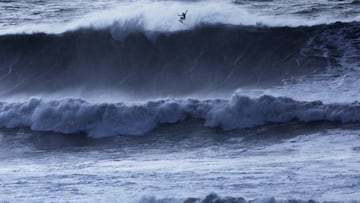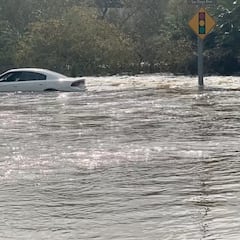What is the cause of the California Giant Wave phenomenon?
Huge waves have been battering the Californian coast as is typical in December. The weather service advises agaisnt surfing.


40ft waves have been arriving on the Californian coast the last two days. They have been caused by low-pressure systems in the Pacific Ocean. Storms over the ocean have been causing large swell that is coming into the US coastline
“As those (swells) come to the coast and they break, that’s when you get those large waves at the coastlines and at the beaches,” said weather service meteorologist Alexis Clouser.
Officials have issued a number of warnings for the weather and are advising people to stay out of the water.
Powerful waves crashed over seawalls along the California coast on Thursday, injuring several people who were swept up in the water while watching the waves. pic.twitter.com/PbPB7HEf0f
— AccuWeather (@accuweather) December 29, 2023
“We really want to hammer home that beaches will be very dangerous,” said weather service meteorologist Nicole Sarment. “People should really not even go.”
What causes the giant waves?
Let’s break down the contributing factors: wind speed, fetch, and time.
Giant waves result from high wind speeds over the ocean. When strong winds blow across a large stretch of open water they generate waves. The greater the wind speed, the more energy is imparted to the water, leading to the formation of larger waves. During storms, where wind speeds are intensified, the combination of sustained high winds and turbulent conditions cause the type of waves seen in California.
WATCH: Large wave hits Ventura, California, injuring 8 people pic.twitter.com/f9SRLFocxf
— BNO News (@BNONews) December 29, 2023
Related stories
Fetch refers to the distance over which the wind blows across the water. A long fetch allows the wind to act on the ocean surface for an extended period, enabling the transfer of energy to the water and the creation of larger waves. The longer the wind blows over the water, the more time there is for wave development.
Over time, smaller waves will crash into each other, either constructively or destructively. Constructive interference, where wave crests align, can lead to the sudden formation of a much larger wave. This phenomenon is more likely to occur with extended periods of wind which is being seen with the Pacific storms.

